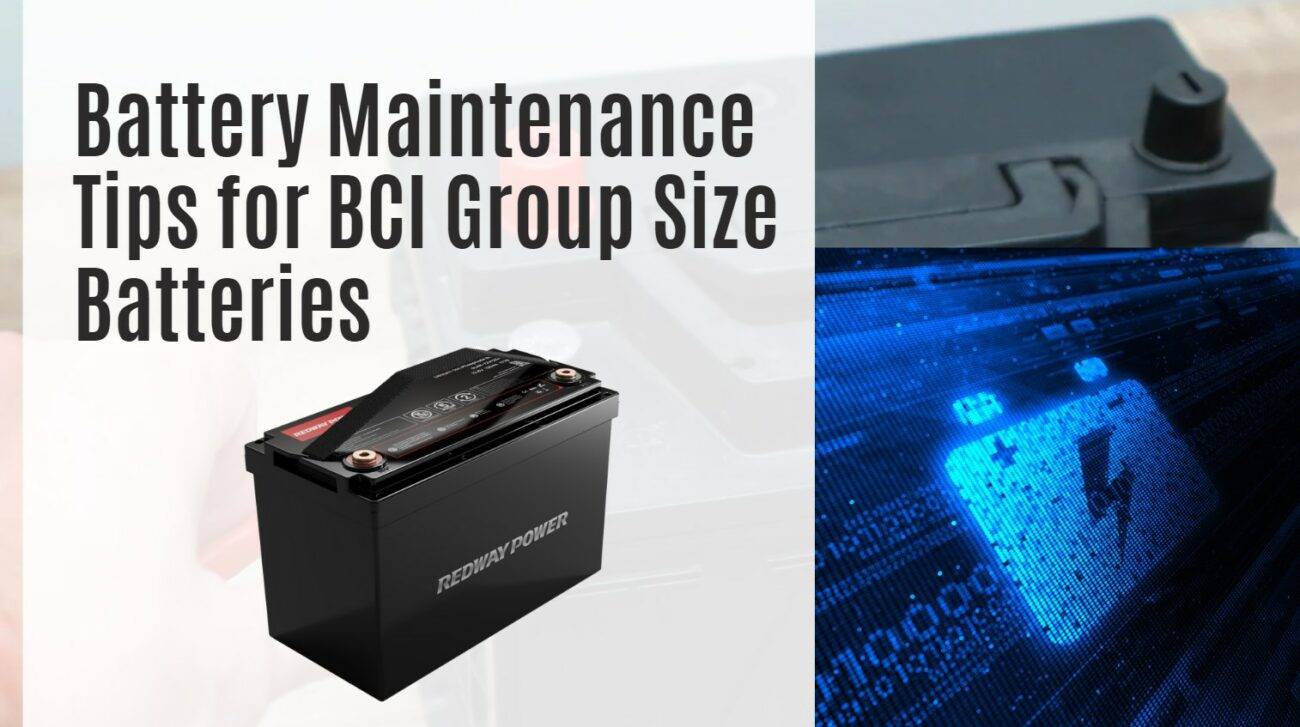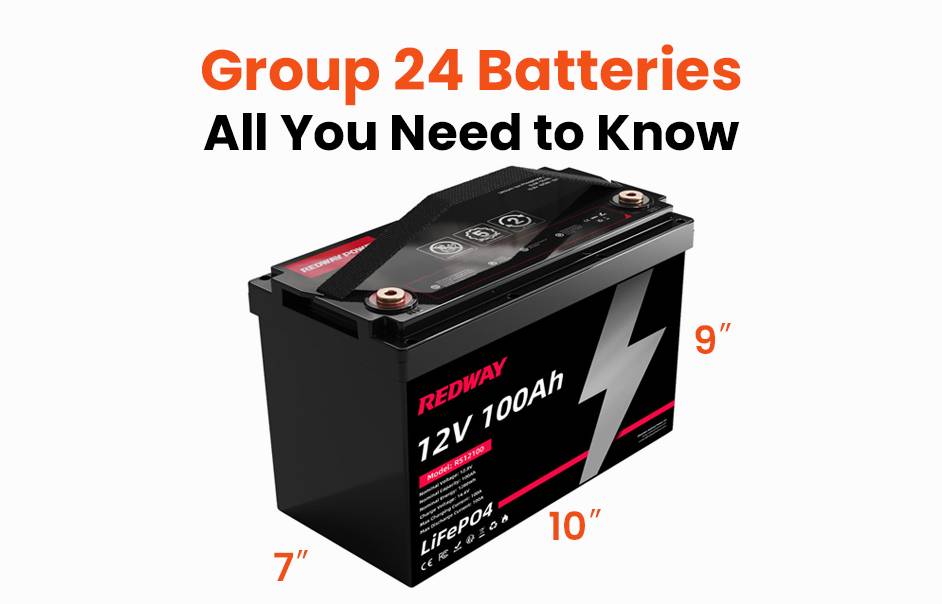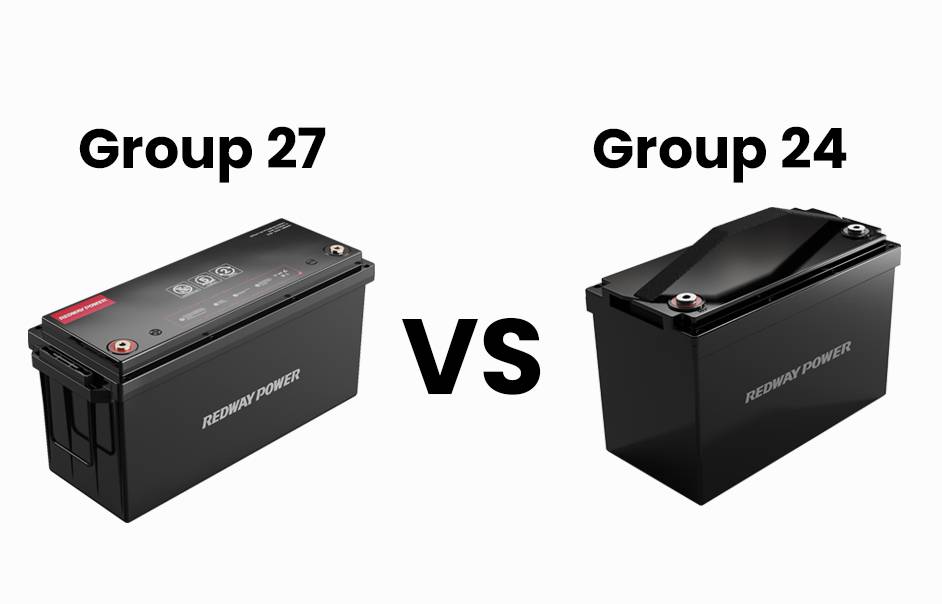- Lithium Golf Cart Battery
- Forklift Lithium Battery
-
48V
- 48V 210Ah
- 48V 300Ah
- 48V 420Ah (949 x 349 x 569 mm)
- 48V 420Ah (950 x 421 x 450 mm)
- 48V 456Ah
- 48V 460Ah (830 x 630 x 590 mm)
- 48V 460Ah (950 x 421 x 450 mm)
- 48V 460Ah (800 x 630 x 600 mm)
- 48V 460Ah (820 x 660 x 470 mm)
- 48V 500Ah
- 48V 560Ah (810 x 630 x 600 mm)
- 48V 560Ah (950 x 592 x 450 mm)
- 48V 600Ah
- 48V 630Ah
-
48V
- 12V Lithium Battery
12V 150Ah Lithium RV Battery
Bluetooth App | BCI Group 31
LiFePO4 Lithium
Discharge Temperature -20°C ~ 65°C
Fast Charger 14.6V 50A
Solar MPPT Charging - 24V Lithium Battery
- 36V Lithium Battery
- 48V Lithium Battery
-
48V LiFePO4 Battery
- 48V 50Ah
- 48V 50Ah (for Golf Carts)
- 48V 60Ah (8D)
- 48V 100Ah (8D)
- 48V 100Ah
- 48V 100Ah (Discharge 100A for Golf Carts)
- 48V 100Ah (Discharge 150A for Golf Carts)
- 48V 100Ah (Discharge 200A for Golf Carts)
- 48V 150Ah (for Golf Carts)
- 48V 160Ah (Discharge 100A for Golf Carts)
- 48V 160Ah (Discharge 160A for Golf Carts)
-
48V LiFePO4 Battery
- 60V Lithium Battery
-
60V LiFePO4 Battery
- 60V 20Ah
- 60V 30Ah
- 60V 50Ah
- 60V 50Ah (Small Size / Side Terminal)
- 60V 100Ah (for Electric Motocycle, Electric Scooter, LSV, AGV)
- 60V 100Ah (for Forklift, AGV, Electric Scooter, Sweeper)
- 60V 150Ah (E-Motocycle / E-Scooter / E-Tricycle / Tour LSV)
- 60V 200Ah (for Forklift, AGV, Electric Scooter, Sweeper)
-
60V LiFePO4 Battery
- 72V~96V Lithium Battery
- Rack-mounted Lithium Battery
- E-Bike Battery
- All-in-One Home-ESS
- Wall-mount Battery ESS
-
Home-ESS Lithium Battery PowerWall
- 24V 100Ah 2.4kWh PW24100-S PowerWall
- 48V 50Ah 2.4kWh PW4850-S PowerWall
- 48V 50Ah 2.56kWh PW5150-S PowerWall
- 48V 100Ah 5.12kWh PW51100-F PowerWall (IP65)
- 48V 100Ah 5.12kWh PW51100-S PowerWall
- 48V 100Ah 5.12kWh PW51100-H PowerWall
- 48V 200Ah 10kWh PW51200-H PowerWall
- 48V 300Ah 15kWh PW51300-H PowerWall
PowerWall 51.2V 100Ah LiFePO4 Lithium Battery
Highly popular in Asia and Eastern Europe.
CE Certification | Home-ESS -
Home-ESS Lithium Battery PowerWall
- Portable Power Stations
Why Understanding BCI Group Numbers Is Essential for Battery Compatibility
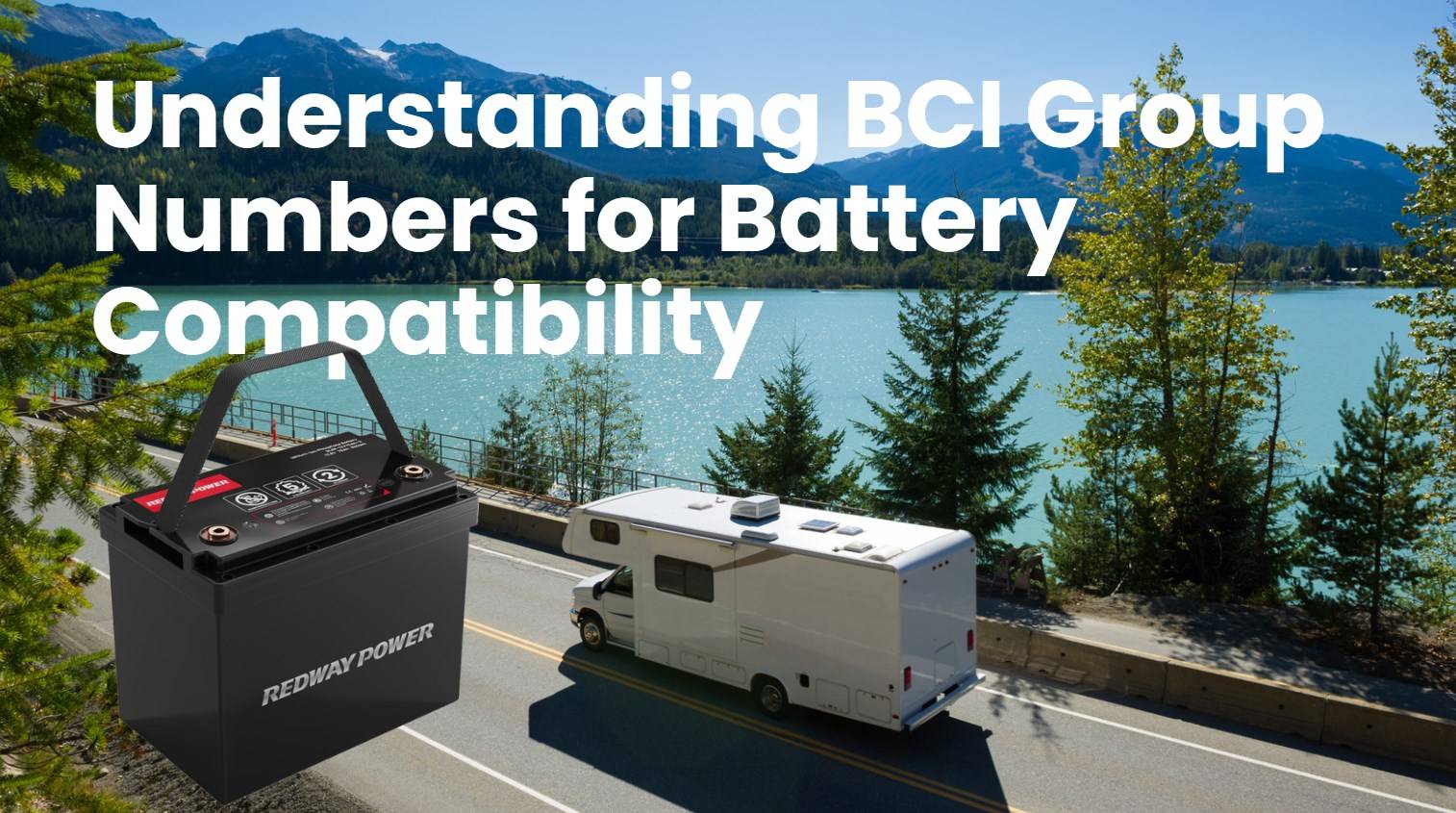
Understanding BCI (Battery Council International) group numbers is crucial for ensuring that the battery you choose is compatible with your vehicle. BCI group numbers indicate the size, terminal configuration, and power specifications of batteries, which are essential for proper fitment and performance.
What Are BCI Group Numbers?
BCI group numbers are standardized classifications that define the physical dimensions and terminal configurations of batteries. Each group number corresponds to a specific set of measurements, ensuring that batteries can be easily replaced or interchanged within compatible vehicles. This standardization helps consumers and manufacturers alike in selecting the right battery for a given application.
Why Is It Important to Know Your Vehicle’s BCI Group Number?
Knowing your vehicle’s BCI group number is vital for several reasons:
- Fitment: A correctly sized battery will fit securely in the designated battery tray without excessive movement.
- Electrical Compatibility: The battery must meet the voltage and amperage requirements of your vehicle’s electrical system.
- Performance: Using the right size ensures optimal performance, longevity, and reliability of both the battery and the vehicle.
| Aspect | Correct Size | Incorrect Size |
|---|---|---|
| Fitment | Secure and stable | Loose or tight |
| Electrical Compatibility | Matches requirements | Potential failure |
| Performance | Optimal | Reduced efficiency |
How Can You Determine Your Vehicle’s BCI Group Number?
To determine your vehicle’s BCI group number, follow these steps:
- Consult Your Owner’s Manual: The manual typically specifies the recommended battery group size.
- Check Existing Battery Labels: If replacing an old battery, check its label for the group number.
- Use Online Resources: Websites like Battery Council International provide databases to help find compatible sizes based on your vehicle make and model.
What Are Common BCI Group Numbers?
Common BCI group numbers include:
- Group 24: Often used in larger vehicles such as trucks and RVs.
- Group 27: Suitable for heavy-duty applications requiring more power.
- Group 35: Commonly found in compact cars and sedans.
- Group 51R: Typically used in smaller vehicles with specific terminal configurations.
| Group Number | Dimensions (L x W x H) | Typical Applications |
|---|---|---|
| 24 | 10.25″ x 6.81″ x 8.75″ | Trucks, RVs |
| 27 | 12″ x 6.75″ x 9″ | Heavy-duty vehicles |
| 35 | 9.06″ x 6.89″ x 8.94″ | Compact cars, sedans |
| 51R | 9.5″ x 5″ x 8.5″ | Smaller cars, hybrids |
FAQs
Can I use a different battery group size?
Considering swapping out your car battery for a different group size? It’s essential to understand the implications before making the switch. Battery group sizes are not one-size-fits-all; they vary in dimensions and power capacity. Using a different group size could potentially lead to compatibility issues, affecting your vehicle’s performance.
Each battery group is specifically designed to fit certain vehicles and provide the required power output. Deviating from the recommended group number may result in improper fitting or electrical system malfunctions. Before making any changes, consult your vehicle’s manual or a professional mechanic for guidance on selecting the right battery group size.
Remember, choosing the correct battery group size ensures optimal performance and longevity for your vehicle’s electrical system.
Also read: BCI Battery Group Size Chart (Group 24, 27, 31, etc)
Does group number battery matter?
When it comes to batteries, the group number does matter. The BCI group number on a battery indicates its physical size and terminal configuration. Different vehicles require specific group sizes for proper fit and function. Using the wrong group number can lead to compatibility issues or even damage to your vehicle.
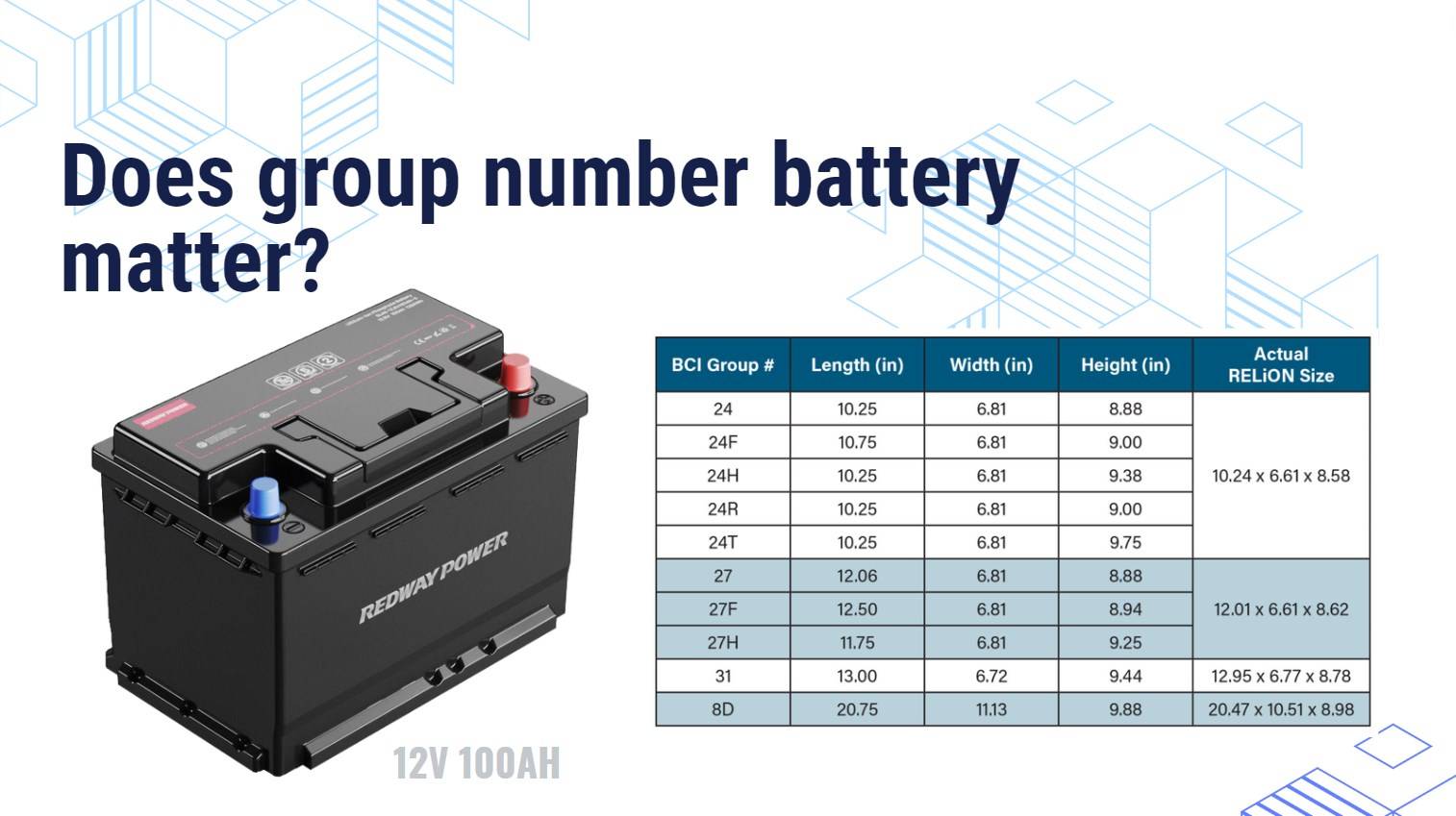
Each group number corresponds to a set of dimensions and terminal placements tailored to different types of vehicles. It’s essential to match the correct group number recommended by your manufacturer for optimal performance and safety. Group 24, Group 27, Group 31 – each serves a unique purpose based on vehicle requirements.
Before replacing your battery, always check the owner’s manual or consult with a professional to ensure you’re selecting the right group number for your specific vehicle model.
How do you read battery numbers?
Understanding how to read battery numbers can be a bit confusing at first glance. The numbers on a battery typically indicate the group size, which is important for compatibility with your vehicle. For example, a Group 24 battery will have “24” as part of its number.
In addition to the group number, you may also see other alphanumeric characters that provide more specific information about the battery’s dimensions and capacity. This additional information helps ensure you choose the right replacement battery for your car or truck.
When shopping for a new battery, knowing how to interpret these numbers can save you time and hassle. Always refer to your vehicle’s manual or consult with an expert if you’re unsure about which battery size is compatible with your automobile.
What is the BCI group number on a battery?
Have you ever wondered what those BCI group numbers on batteries mean? Well, let’s dive into it! The Battery Council International assigns a specific number to each battery size to help consumers identify the right fit for their vehicles. This grouping system is crucial for ensuring compatibility between the battery and the vehicle it powers.
The BCI group number on a battery essentially indicates its physical dimensions and terminal configuration. By understanding this number, you can easily determine if a particular battery will fit in your car or not. It’s like a code that unlocks the mystery of which battery is right for your vehicle.
So next time you’re shopping for a new battery, pay attention to those group numbers on the labels. They hold the key to finding the perfect match for your car’s power needs.
What does the group number tell you on a battery?
Ever wondered what those group numbers on batteries actually mean? The group number on a battery is like its special code, telling you about its size and characteristics. It’s not just a random number slapped onto the battery!
The group number gives you key details about the physical dimensions of the battery, helping you ensure it fits your vehicle perfectly. Different vehicles require different sizes of batteries, so paying attention to this number is crucial.
Moreover, the group number also indicates the electrical capacity and performance capabilities of the battery. A higher group number usually means more power output and storage capacity.
Understanding these numbers can save you time and hassle when looking for a replacement battery or upgrading to a better one for your vehicle. So next time you see that mysterious group number on a battery, remember it holds valuable information beyond just digits!
What is the difference between Group 31 and Group 34 battery?
When it comes to understanding the difference between Group 31 and Group 34 batteries, size is a key factor. Group 31 batteries are typically larger and have higher capacities compared to Group 34 batteries. This means that they can provide more power for heavy-duty applications like commercial trucks or RVs.
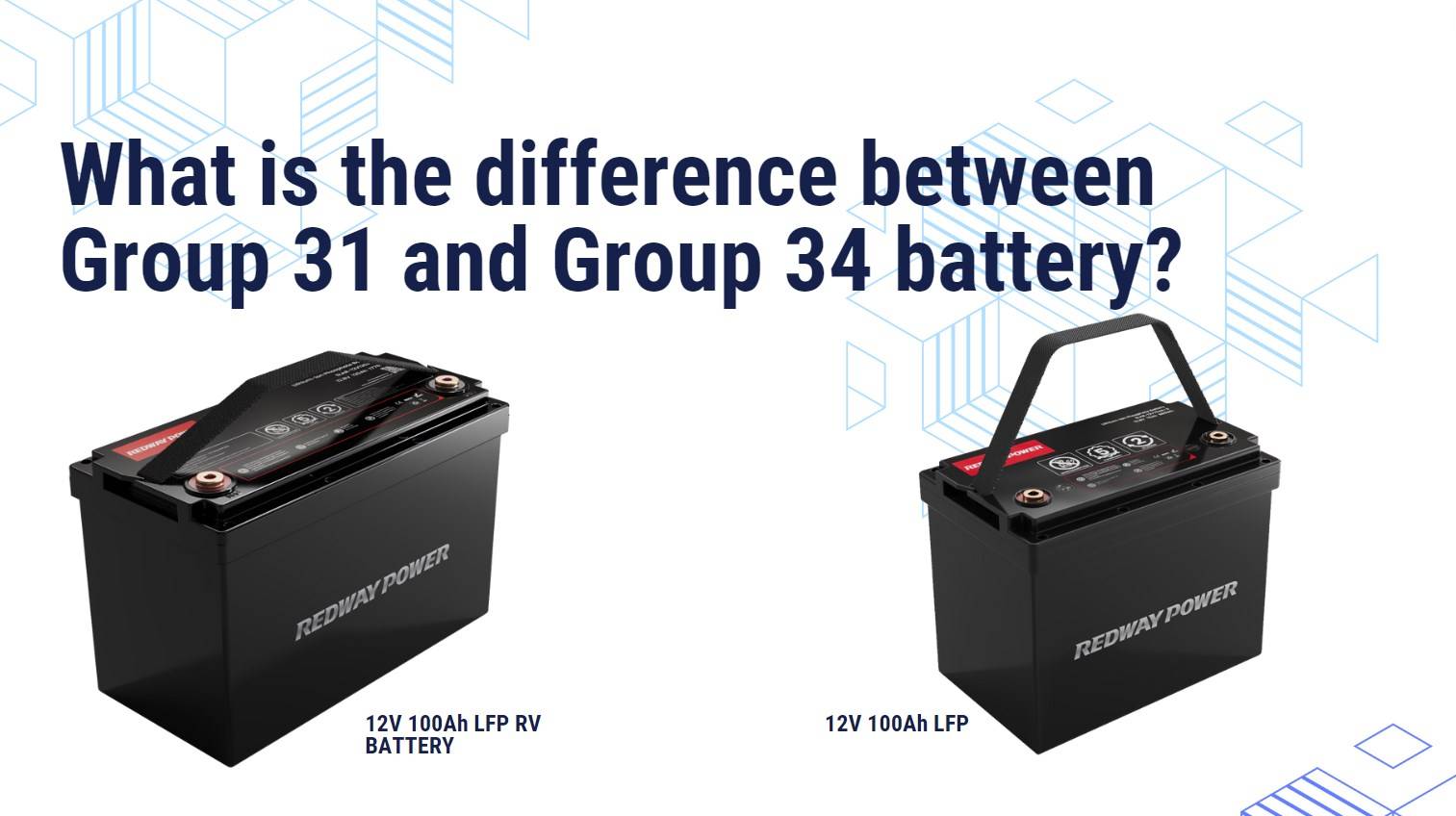
On the other hand, Group 34 batteries are more compact and suited for smaller vehicles such as cars or motorcycles. They are designed to fit in tight spaces without compromising on performance. While both battery groups serve their purpose well, it’s essential to choose the right size based on your vehicle’s requirements.
Group 31 batteries offer greater longevity and resilience for demanding use cases, while Group 34 batteries provide efficiency and convenience in smaller vehicles. Understanding these distinctions can help you make an informed decision when selecting the appropriate battery for your specific needs.
What is the difference between a group 24 and a group 31 battery?
Looking at the difference between a group 24 and a group 31 battery can help you understand their distinct characteristics. Group 24 batteries are typically smaller in size compared to group 31 batteries, which are larger and have more capacity. The group number indicates the physical dimensions and electrical capacity of the battery.
Group 24 batteries are commonly used in applications like RVs, marine vehicles, and small engine equipment due to their compact size. On the other hand, group 31 batteries are often found in heavy-duty commercial vehicles and industrial equipment that require higher power output. When choosing between a group 24 or a group 31 battery, consider your specific power needs and space constraints. Understanding these differences can guide you towards selecting the right battery for your intended use.
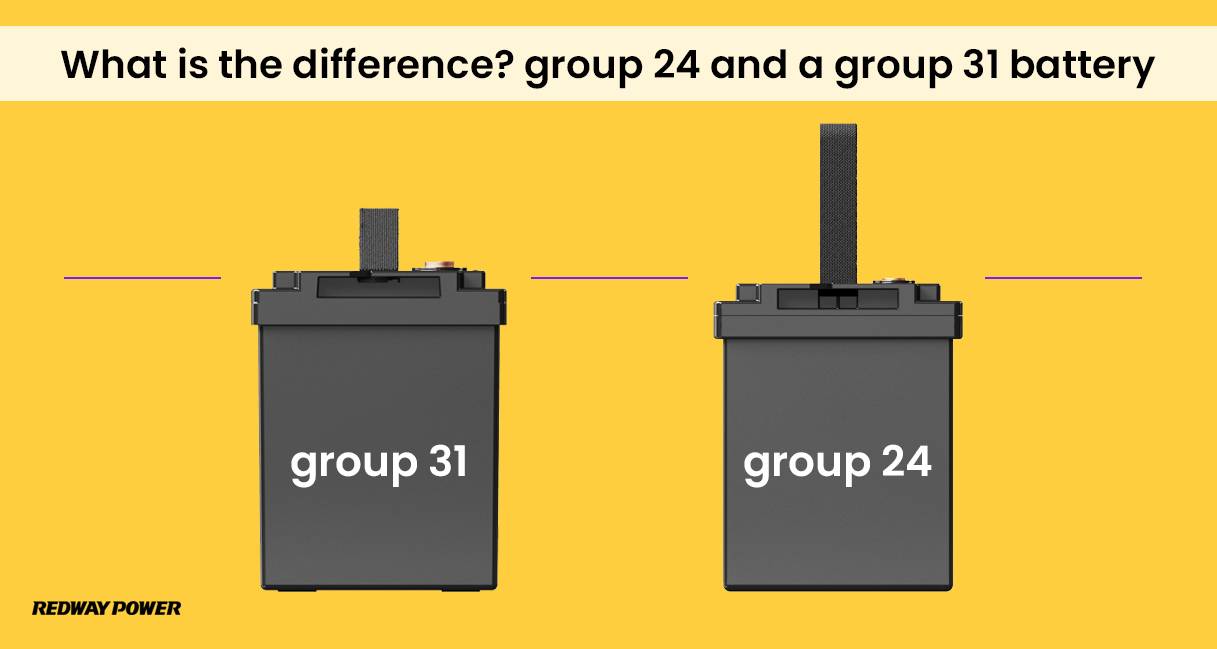
Are group 24 and 34 batteries the same?
When it comes to group 24 and group 34 batteries, size does matter. Group 24 batteries are typically smaller and have lower capacity compared to group 34 batteries. It’s like comparing a compact car to an SUV – they serve different purposes.
Group numbers indicate the physical dimensions and electrical specifications of the battery. The higher the number, the larger the battery will be in most cases. So, if your vehicle requires a specific group size, it’s essential to stick with that recommendation for optimal performance.
Installing a different group size than what is recommended can lead to compatibility issues and potentially damage your vehicle’s electrical system. It’s always best to follow manufacturer guidelines when selecting a replacement battery for your car or truck.
While both group 24 and group 34 batteries serve similar purposes, their sizes differ significantly in terms of physical dimensions and capacity.
Is a group 27 battery bigger than a group 24?
When it comes to comparing group 27 and group 24 batteries, size does matter. Group numbers are not random; they indicate specific dimensions and capacities tailored for different vehicles and applications.
A group 27 battery is typically larger than a group 24 in terms of length, width, and sometimes height. The physical size difference between the two can impact whether they will fit into the designated battery compartment in your vehicle comfortably.
Group sizes correlate with varying power outputs, so choosing the right one is crucial for optimal performance. While both groups serve similar functions, their specific dimensions can affect compatibility with your vehicle’s battery tray or terminals.
Before making a decision between a group 27 or group 24 battery replacement, ensure you check your vehicle’s specifications to guarantee a proper fitment that meets the necessary power requirements.
Can I replace a group 27 battery with a group 24?
Are you wondering if you can interchange a group 27 battery with a group 24? The answer lies in understanding the compatibility between these different battery sizes. Group numbers indicate various specifications, including dimensions and capacity, so it’s crucial to consider these factors before making a switch.
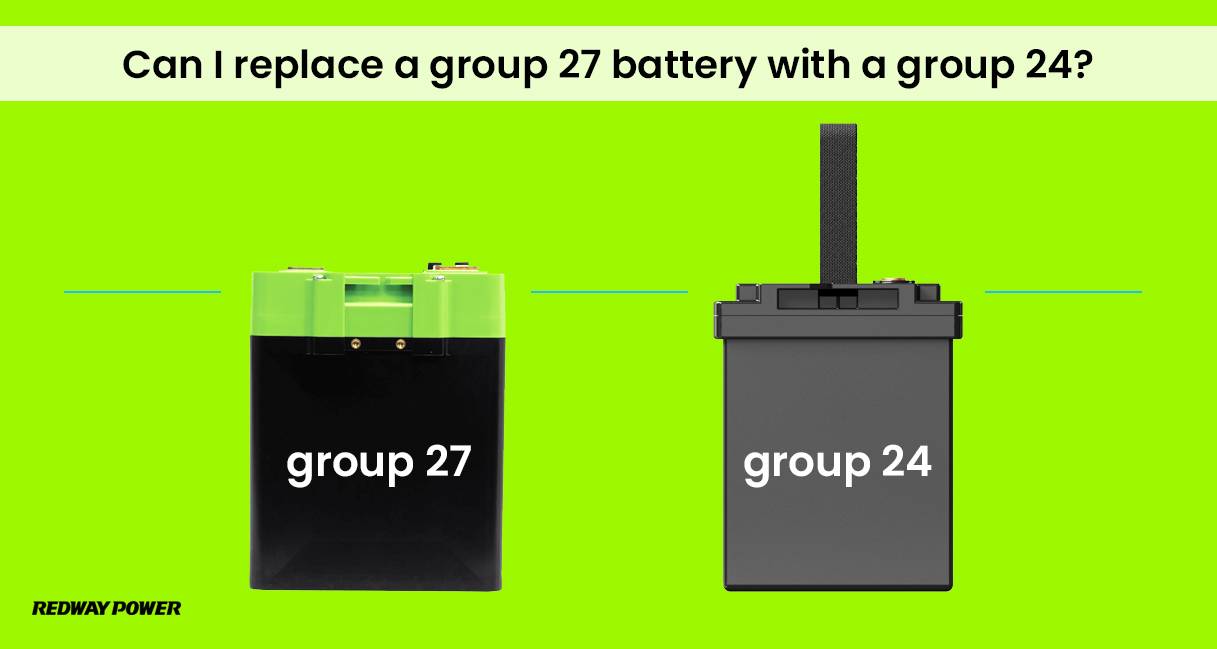
A group 27 battery is typically larger and has more power capacity compared to a group 24, which means they may not always be interchangeable without potential issues arising. It’s essential to consult your vehicle manual or a professional to ensure that switching between these two battery groups won’t cause any compatibility issues.
Remember that choosing the right battery size for your vehicle is key to ensuring optimal performance and longevity of your electrical system. So, take the time to research and make an informed decision when considering replacing your car battery with a different group size.
What is the difference between battery group size 27 and 31?
When it comes to battery group sizes, understanding the differences can make a big impact on your vehicle’s performance. Group 27 and Group 31 batteries may seem similar, but they have distinct characteristics that set them apart.
Group 27 batteries are typically smaller in size compared to Group 31 batteries. This means that Group 31 batteries often have higher capacity and more power output than their Group 27 counterparts.
In terms of dimensions, a Group 31 battery is usually larger in length, width, and height compared to a Group 27 battery. This difference in size can affect where the battery can be installed in your vehicle and how it fits within the designated space.
Additionally, due to their larger size and capacity, Group 31 batteries are commonly used in heavy-duty vehicles or applications that require more power for extended periods. On the other hand, Group 27 batteries are suitable for lighter duty vehicles or equipment with lower power demands.
Understanding these distinctions can help you choose the right battery for your specific needs based on factors like power requirements, available space for installation, and intended use of the vehicle or equipment.
What does group 27 mean on a battery?
Understanding BCI Group Numbers for Battery Compatibility is essential for ensuring your vehicle runs smoothly. By grasping the differences between various group sizes like 24, 27, 31, and others, you can make informed decisions when replacing or upgrading your battery. Remember that each group number signifies specific dimensions and capacities tailored to different vehicles’ requirements. So next time you’re shopping for a new battery, keep in mind what the group number on a battery means—it’s not just a random label but rather crucial information guiding your choice.
















